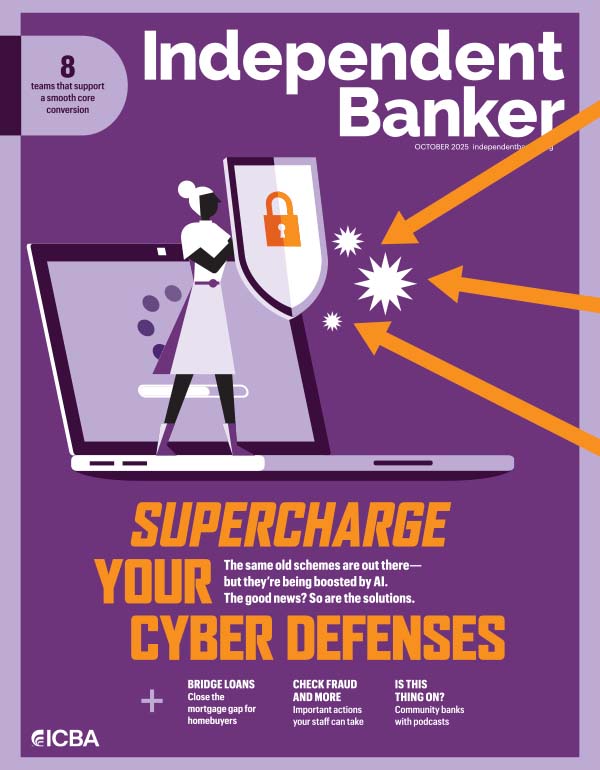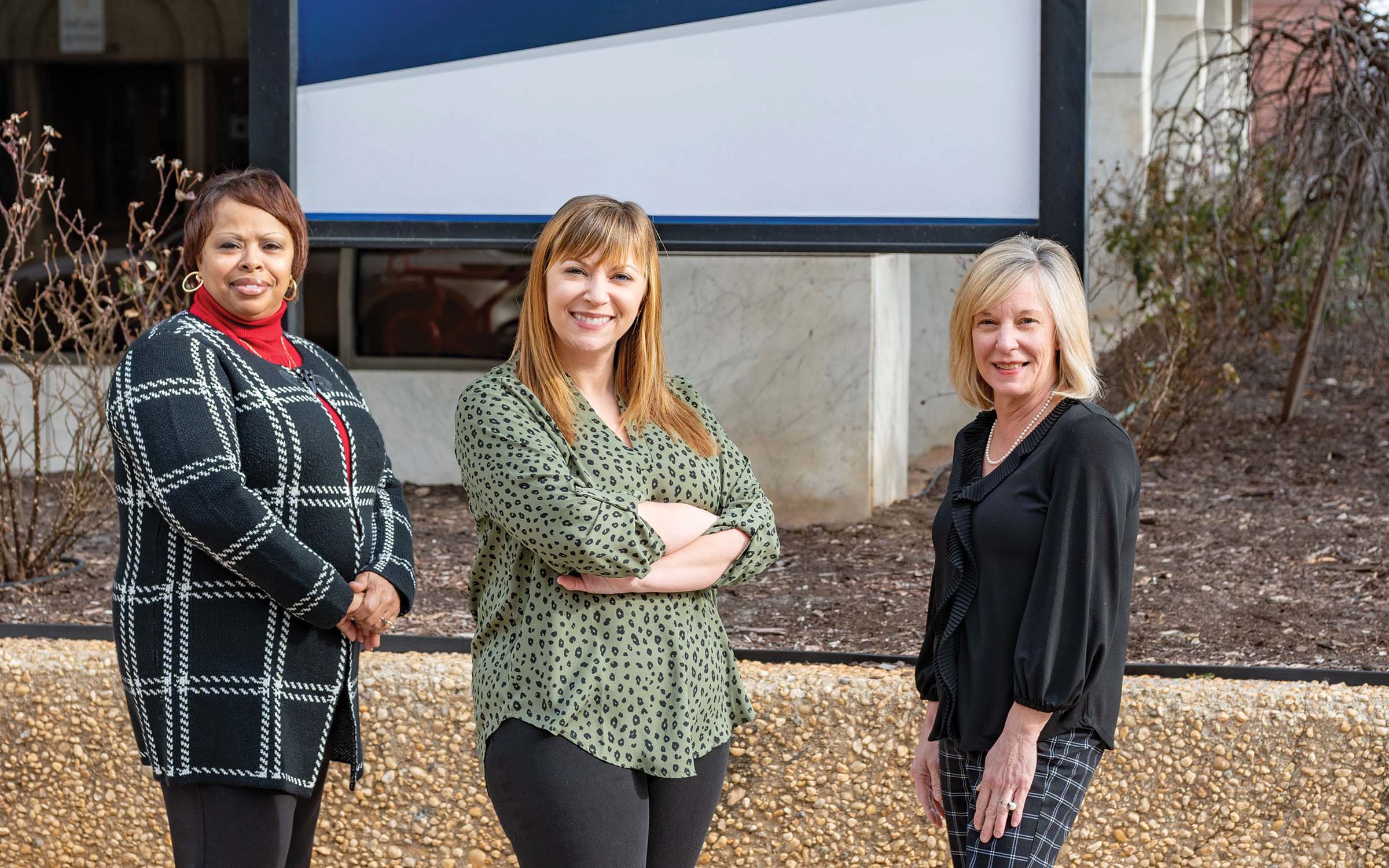As technology continues to change the retail banking landscape, community banks are finding innovative ways to compete.

“Banks are trying to stay ahead of technology,” says Thomas Gdowski, president and CEO of $505 million‑asset Equitable Bank in Grand Island, Neb. “I think community banks have to be with a partner that can provide the type of software [that can] help you implement these solutions.”
Instant payments, such as Venmo and Square, have been rocking the financial world for some time. Their use is ushering a younger, tech-native demographic into the financial world—if not the institutional banking world—at a much younger age than previous generations.
“It’s really important for banks to understand that the entry point for banking is happening earlier,” says James Peil, head of partnership and business development for Rego Payments, a family wallet platform. “[Kids nowadays] get their first smartphone at 10 and a half years, and that’s when the family looks for solutions in the app store. You want that entry point to banking to be your brand.”
Instant payments are key
Evan Uchtman, EVP of sales and operations for payments solution provider Neural Payments, agrees that instant payments have gone viral among younger consumers who exchange money via smartphone apps without explicit reference to a bank. While this excludes banks from many transactions, Uchtman believes that niches of opportunity still exist.
“Venmo can’t reach [those who don’t use the app],” he says. “Our technology allows banks to participate in this digital network.”
Digitalization of payments and other functions is critical, but there are barriers. “It’s hard because the entry fee for these things, on a relative cost basis, is very high table stakes for a small bank,” says Robert Steen, CEO of $128 million-asset Bridge Community Bank in Mount Vernon, Iowa. “But if you want to stay relevant, you’ve got to be in the game.”
Bridge Community Bank partnered with Open Payment Network Inc. to send and receive payments from both FedNow and The Clearing House’s RTP. The bank started using RPT to receive payments in early 2021, adding sending capability through Open Payment Network Inc. in July 2022.
“As an industry, we’ve sat by wringing our hands and allowed Venmo and PayPal to take our customers. Instant payments give us a chance to get some of that back,” says Steen, who served on the Federal Reserve Task Force and Steering Committee that explored, defined and developed what has become the FedNow instant payment network.
Leaning on staff expertise
Community banks are using their technology investments to update and complement customer engagement. When Equitable Bank upgraded its internet banking platform, the bank also restructured its deposit operations to empower frontline staff and ensure it is supported by the most experienced team members.
“We’re making sure the support staff we have in place are knowledgeable and have reliable systems and are in a position to make decisions that serve the customers,” says Gdowski.
He emphasizes that this operational restructuring reaffirms Equitable Bank’s traditional community bank commitment to service and relationships. “Giving our customers instant access to a live person who has the resources to act for the benefit of any customer, no matter where they’re located, continues to be one of the key components to our value proposition,” he says. “It helps us to continue to grow our deposits.”
Equitable has had success, reporting $105 million in organic growth in the past four years, including a 34% increase in retail deposit customers and 18% retail deposit account growth.
In another effort to drive customer engagement, Equitable has introduced “Equi$Manager,” an internet banking product that allows retail banking customers to gather and review all their financial accounts together on Equitable Bank’s platform.
“We’re excited about it. People want to see everything they can in one place,” Gdowski says. “They can pull in their 401(k) or IRA statements or loan statements, so they don’t have to go to four or five different places. A person can set goals for themselves, and they can print out their own financial or net-worth statements and determine if they’re making progress.”
Coin-counting gets an upgrade
Money is still literally changing hands, as the Federal Reserve Board reports $2,297.4 billion U.S. currency in circulation as of Dec. 31, 2023. That’s a lot of nickels and dimes stashed in piggy banks and hidden under the couch cushions.
Coinstar, known for its money transformation services, has recently introduced card-swiping functionality to its kiosks. Users can deposit coins and cash directly to their bank accounts by swiping their debit card. Since Coinstar kiosks are located both in bank branches and retail establishments, this provides expanded access outside a community bank’s branch network.
“[Coin handling] is one of the last things that bank branches haven’t been able to automate in an elegant way,” says Lee Pantalone, Coinstar’s VP of sales, marketing and digital media.
“We’ve gotten positive feedback in terms of the customer experience,” he says. “We launched with a local community bank, and the branch personnel were clapping as we removed their old coin‑counting equipment from their branches.”
A digital branch inspires growth
First International Bank & Trust (FIBT) in Watford City, N.D., spun off a digital branch in 2021 and has reallocated staff resources there to enhance the customer experience.

“We [have] our very experienced, sometimes our best bankers in the digital division, responding to consumers,” says Justin Walseth, chief growth officer of the $5 billion‑asset community bank. “They engage customers just as they would in a [physical branch], but through chat, text and email. What we see is the client builds a relationship with the digital banker. The next time they have a question, that’s who they reach out to.”
FIBT has had great success, with a 25% increase in the number of accounts opened in the digital division since 2021 and a 77% growth in deposit dollars in digital since 2021.
FIBT has also launched a rewards account to encourage debit card usage. Instead of giving a point for every dollar spent, like many credit card programs, the program refunds $15 to a customer who spends $1,500 on their debit card. As a result, on average FIBT customers use their debit cards 44 times a month. These same clients have $11,000 in savings, $54,000 in CDs and $75,000 in loans with FIBT on average.
“This product has created debit card user-driving incentives but has also grown our relationships with clients because they’re very engaged with the product,” Walseth says.
FIBT will launch a youth banking offering in 2025. It will include debit cards, gamified financial education, spending controls, chores and allowance management, and even a chance to have fractional shares in the stock market. “It’s a fantastic platform,” says Walseth. “It’s one of the major gaps in our society that people don’t learn about money management in school, and parents may not be able to teach it.”
AI’s role in personalization
Build a better branch
Bank branches play a key role in the customer experience. See our December 2024 article on branch design to be inspired by your peers’ innovative branch designs.
AI-powered tools can make a huge difference in targeted marketing efforts, and $630 million-asset Springs Valley Bank & Trust (SVBT) in French Lick, Ind., is actively pursuing this advantage. SVBT has partnered with Micronotes.ai, an ICBA ThinkTECH Accelerator alumnus, to identify the best prospects for its products.
“Digital Prescreen with Micronotes’ infrastructure offers Springs Valley the ability to develop more targeted and compliant marketing campaigns to maximize responses and grow revenue,” says Craig Buse, SVBT’s president.
Micronotes.ai has partnered with Experian to review customers and prospects who have debt and might appreciate a savings opportunity. “We are able to tell community banks who’s the ideal customer within a group, and we can build hyper-personalized offers for consumers showing them the dollars they’d save,” says Parker Steed, VP of sales for Micronotes.ai. “You can go to market with the sophistication of a large institution on a community bank’s budget.”
As they face the future, community bankers recognize that success in retail banking will require change. “The younger population is very comfortable with technology,” Gdowski says. “In the next five years, it will be a given that you have to do that to meet the needs of the Gen Zs of the world.”






